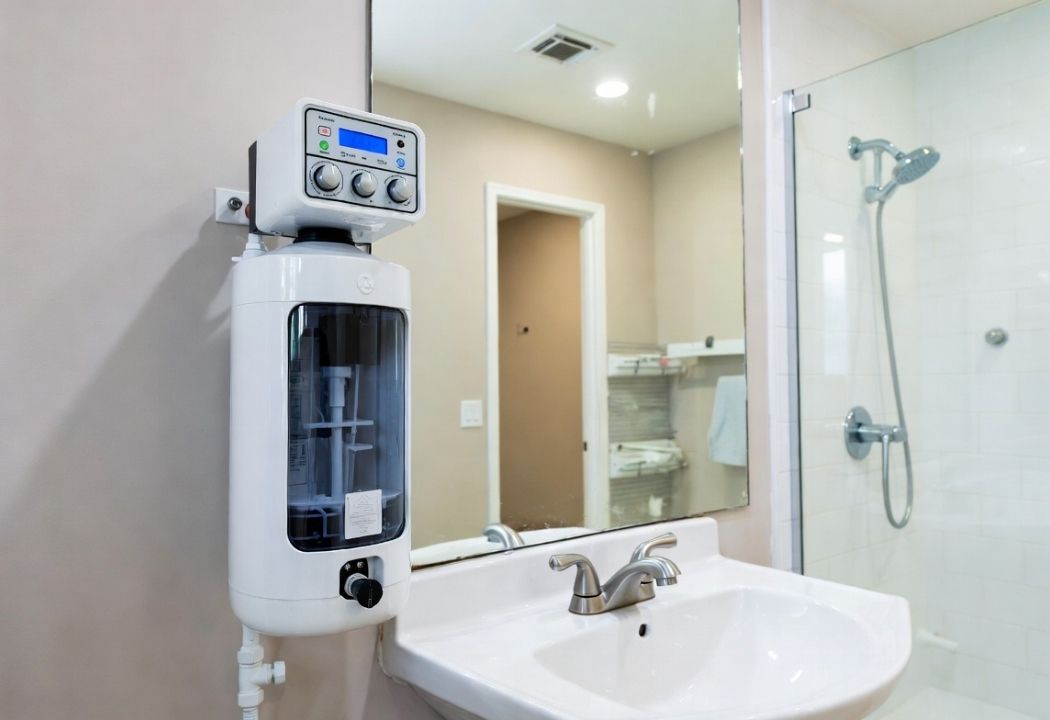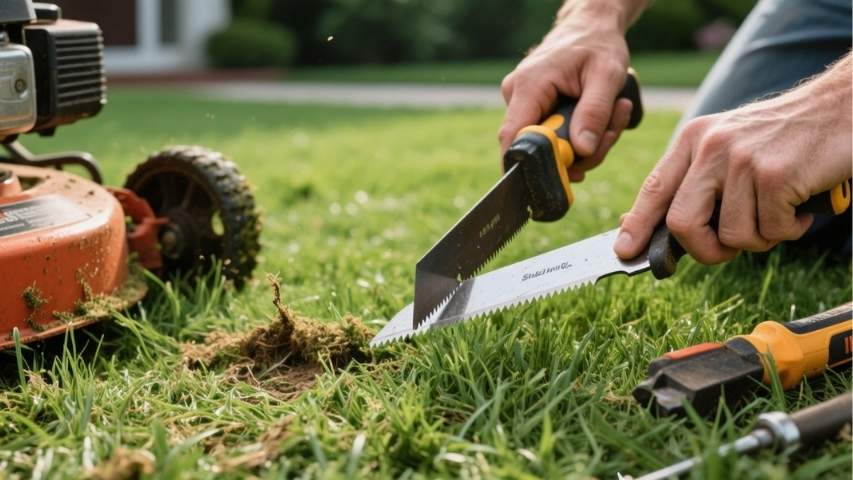Picture this (and I promise, no clichés beyond this one): You’re standing in your living room, trying to figure out why it feels… off. It’s not messy, and the furniture is fine—it’s your favorite. But something about the way everything is arranged isn’t delivering. Things feel cluttered or just kind of meh. Sound familiar?
The truth is, most of us don’t give much thought to furniture placement. We focus on aesthetics—Does this match my coffee table?—but forget that a room’s layout directly impacts how functional and inviting it feels. That’s what I’m here to talk about today.
This post dives into a powerful trick right under your nose (or beneath your couch): combining functions with furniture arrangement. It sounds fancy, but I promise it’s super practical. I’ll break it down into actionable steps, share some personal insights, and—hopefully—get you to experiment with your space in ways you didn’t think possible.
Why Should You Care About Function and Furniture?
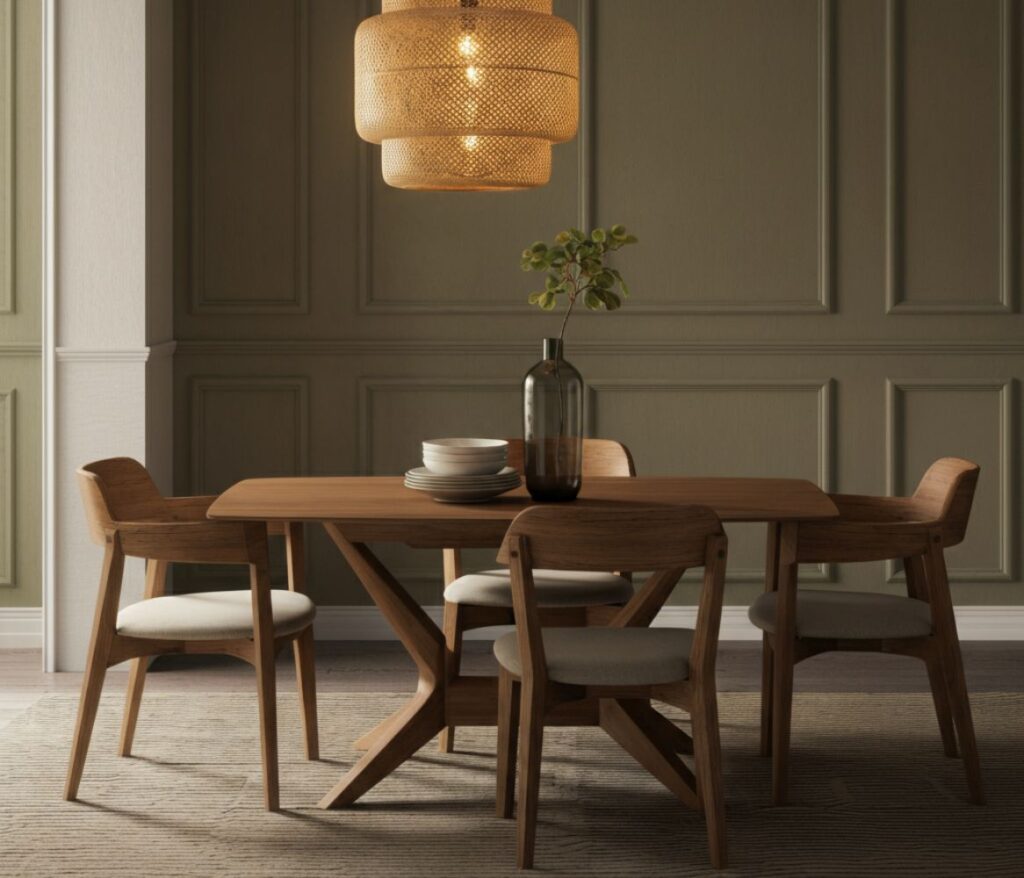
Before we jump into “how,” lemme hit you with a little “why”:
Every Space Tells a Story
Rooms are like people—they’ve got potential and personality. How your space is arranged either supports or disrupts what it’s supposed to do. Think about your dining room. Is it a place for cozy meals, or does it double as your home office? Your layout can make—or seriously break—that vibe.
Multiple Functions Save Square Footage
This one is for my small-home dwellers or anyone renting a 600-square-foot apartment. Furniture that multitasks (like a storage ottoman) and smart arrangements (like pushing that couch against the wall to open up a walkway) give you more use per square foot.
Efficiency is energy
I’m serious. If your bedside table doubles as a charging station and storage solution, or your open shelving makes finding stuff effortless, you’re saving yourself actual mental energy. The type of energy drain that happens when you’re rummaging through junk drawers at midnight.
Let’s get practical.
6 Game-Changing Tips for Combining Functionality & Furniture Arrangement
Start by Defining the Purpose of Your Space
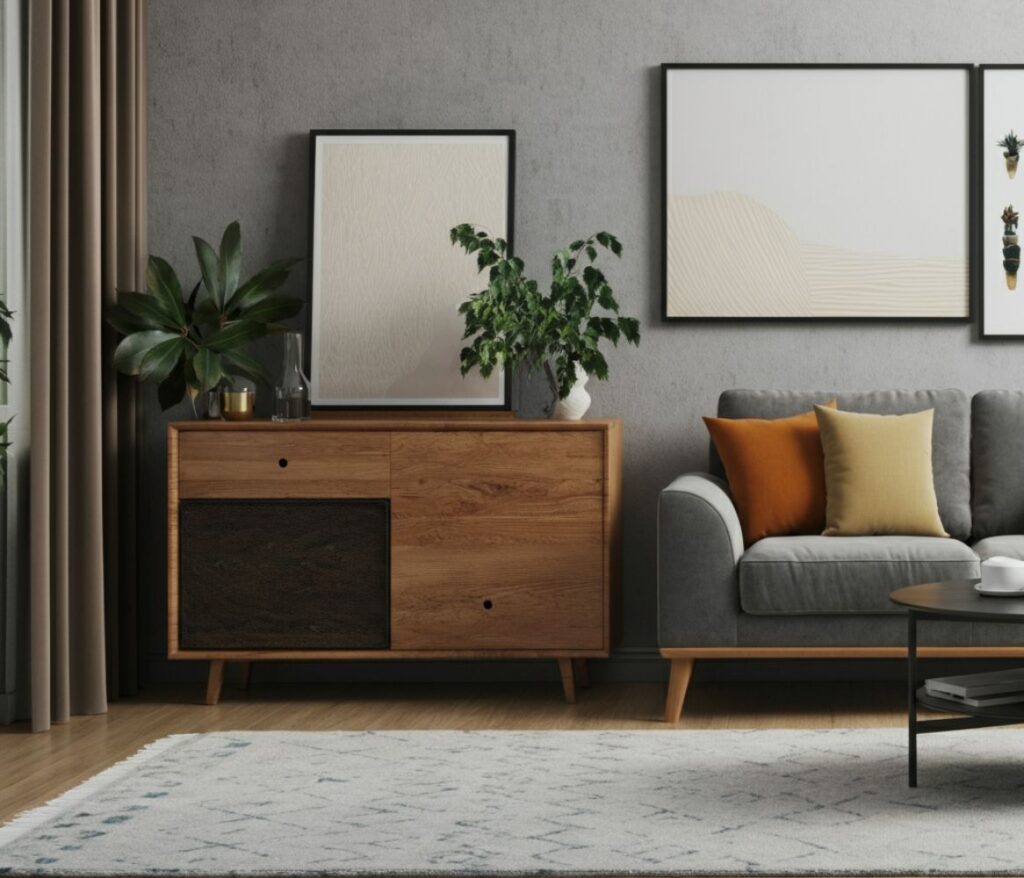
What’s your space really for? This sounds basic, but people get tripped up here. Take your living room. Do you use it exclusively for Netflix marathons, or is it also your yoga zone? Write a list of your room’s main tasks; this will steer every subsequent decision.
Pro Tip: Have fun with this part! Imagine you’re Marie Kondo-ing your space. Does everything in the room spark joy and serve a purpose, or is some stuff just “there”?
Zone Your Room Areas Like a Pro
This concept saved my chaotic studio apartment. Picture your room as a pie (mmm, pie). Instead of one random blob of furniture in the center, think of your area as having distinct zones. For example:
- A comfy seating area for conversations and TV time
- A corner carved out for a desk
- Open floor space for yoga, meditation, or kid-wrangling
Use rugs, furniture orientation, or even plants to create clear sections. Zoning isn’t just for city planners.
Don’t Skimp on Multi-Functional Furniture
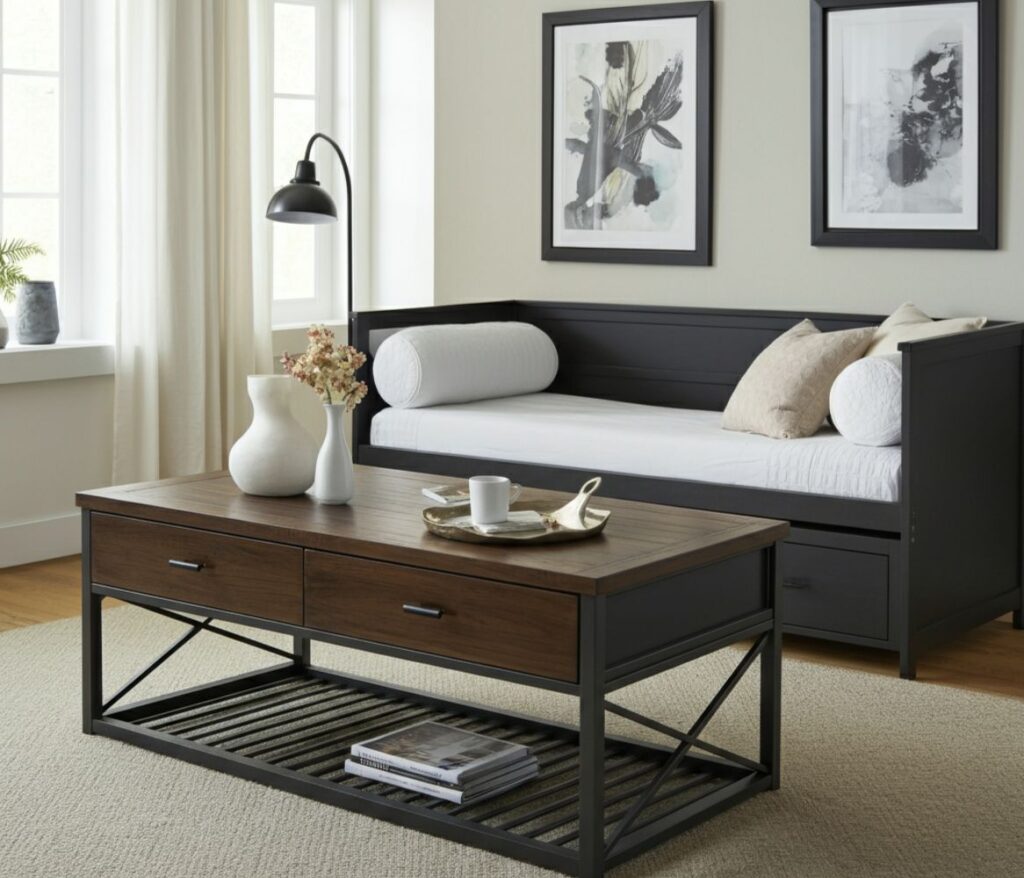
If I could give your furniture a pep talk, I’d say, “Be more!” Think about it. A coffee table with hidden drawers pulls double duty as storage and centerpiece. A daybed? It’s a couch and an actual bed.
Try these pieces on for size:
- Sofa beds for guests (or inevitable nap attacks)
- Storage ottomans to stash blankets or game controllers
- Console tables that moonlight as work desks
The point is, every item should carry at least two jobs if you can swing it.
Use Furniture to Guide Movement
Here’s what I learned the hard way (after bruising my leg on a poorly placed ottoman): furniture layout can make or break how a space flows. You need to think about how you move through the room.
For example:
- Don’t block major walkways with bulky pieces
- Keep the entry point into a room welcoming and unobstructed
- Orient your seating toward a focal point, like a fireplace or a window
A pro tip? Map out your flow with painter’s tape before moving anything. Visualizing first saves you from heavy lifting or constant regret later.
Always Think Vertical
Here’s a curveball you might not have considered. Functional furniture doesn’t have to sit on the ground. Wall-mounted shelves or fold-out Murphy beds are incredible for small rooms or when you want to keep the floor uncluttered.
What could you take up (instead of crowding the floor)? Think shelving for plants, hanging desks, or wall-mounted shoe storage rather than boxed.
Create a Lighting Strategy That Works with Your Layout
I can’t preach enough about good lighting. Bad lighting can instantly ruin the vibe, no matter how smart your furniture placement is. Think layered lighting here:
- Use task lights (like floor lamps) near reading areas.
- Opt for soft ambient lighting over your seating zones.
- Accent lighting (like LED strips or candles) makes everything feel just the right mix of cozy and fancy.
Compliment your furniture zones with custom lighting that amps up their function.
BONUS ROUND: Sneaky Hacks to Try
Mirror Magic – Place mirrors strategically to reflect light and visually expand small areas.
Invisible Storage – Add slimline baskets beneath your coffee table or bed—trust me, no one notices!
Command Hooks Everywhere is a game-changer for temporary, renter-friendly storage solutions.
Your Space, Your Energy
At the end of the day, how you arrange your home is deeply personal—it’s a reflection of you. Combining function with furniture placement isn’t about perfection. It’s about creating spaces that suit your needs, quirks, and style.
Try the tips above and see if you can transform a tiny corner into your new favorite HQ for creativity and calm.
And hey, I am curious about trying a new layout but feeling stuck. Drop your questions in the comments below, and I’d love to brainstorm. Seriously, your space has more potential than you know!








